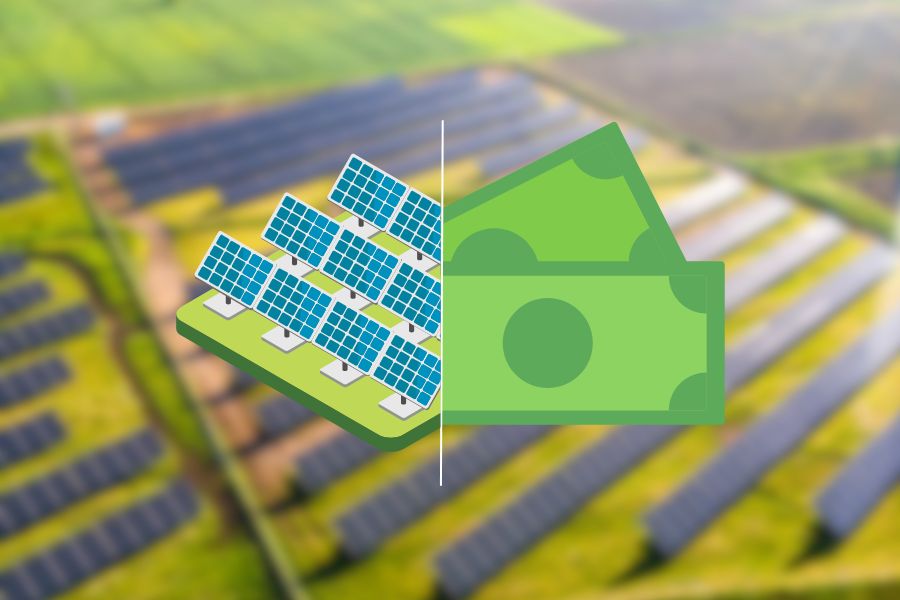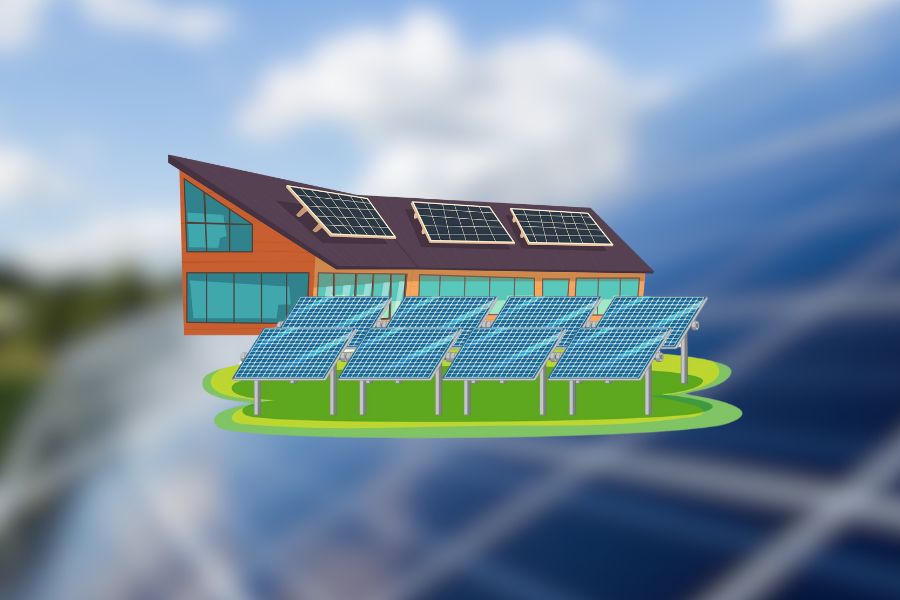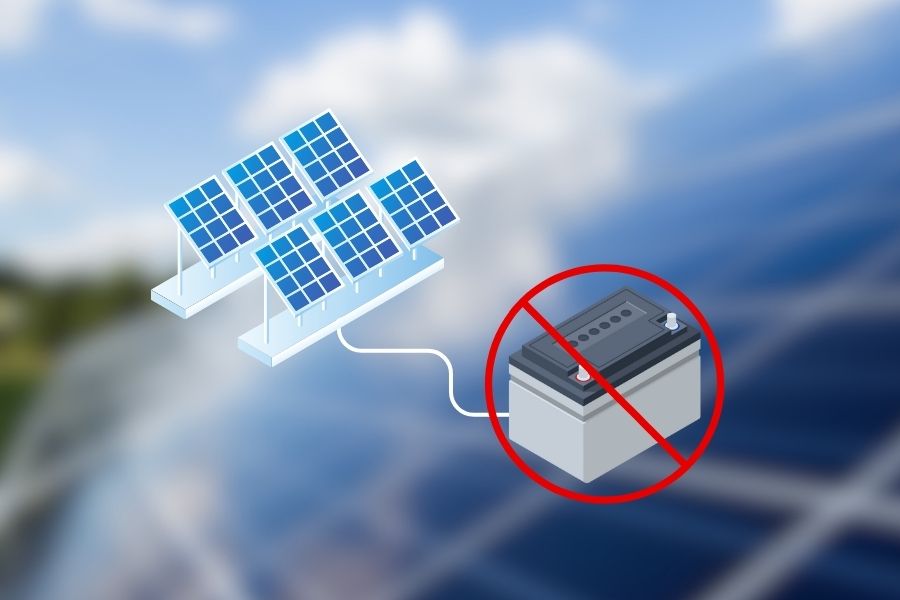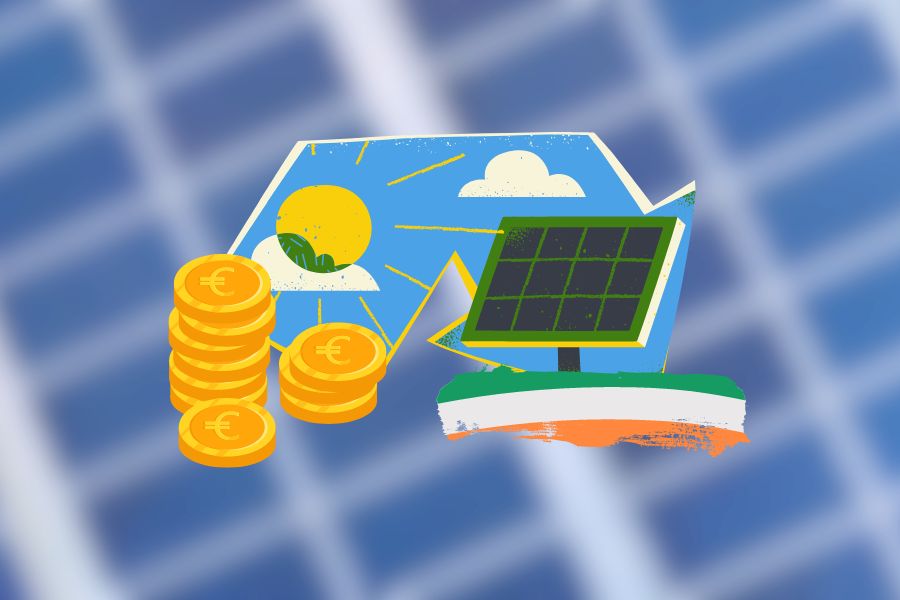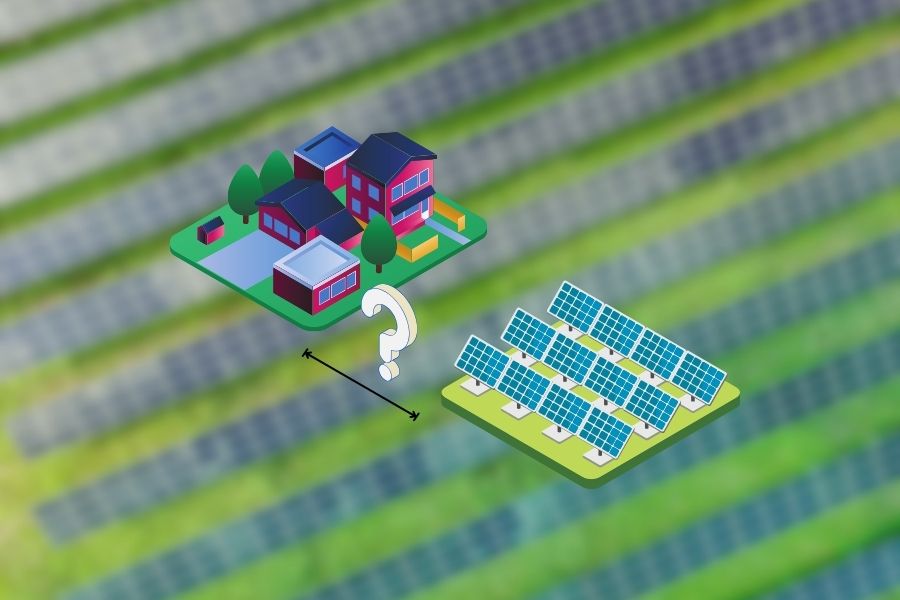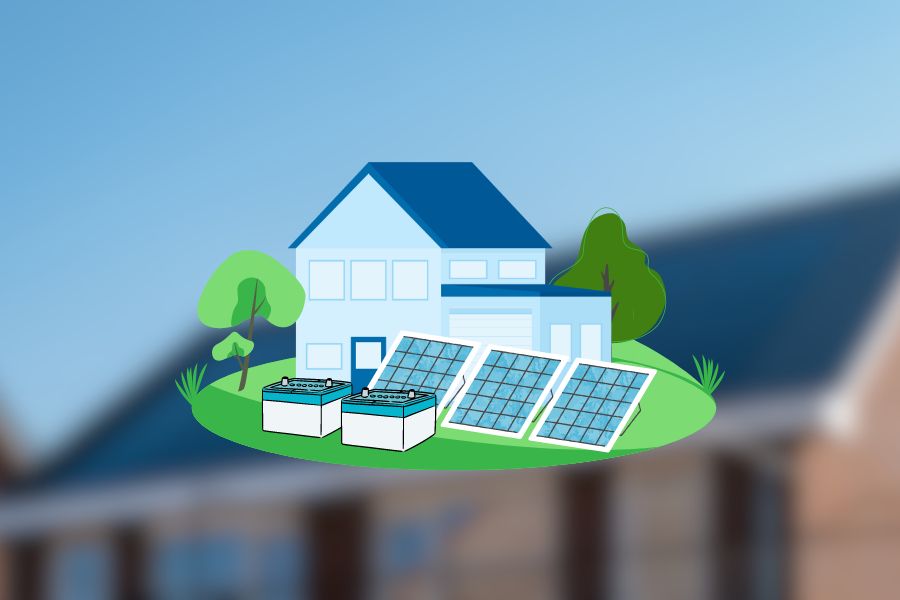In Ireland, average peak sun hours have a crucial influence on solar panel efficiency. Peak sun hours refer to the number of hours when solar irradiance averages 1,000 watts per square meter, representing the most productive period for solar energy generation.
The higher the peak sun hours, the greater the solar panels’ power output. While Ireland’s climate is often cloudy, its average peak sun hours can still yield significant solar power.
Therefore, understanding this concept is critical for Irish homeowners and businesses contemplating a move to solar energy, as it directly impacts solar systems’ design, installation, and return on investment.
What Is a Peak Sun Hour in Solar?
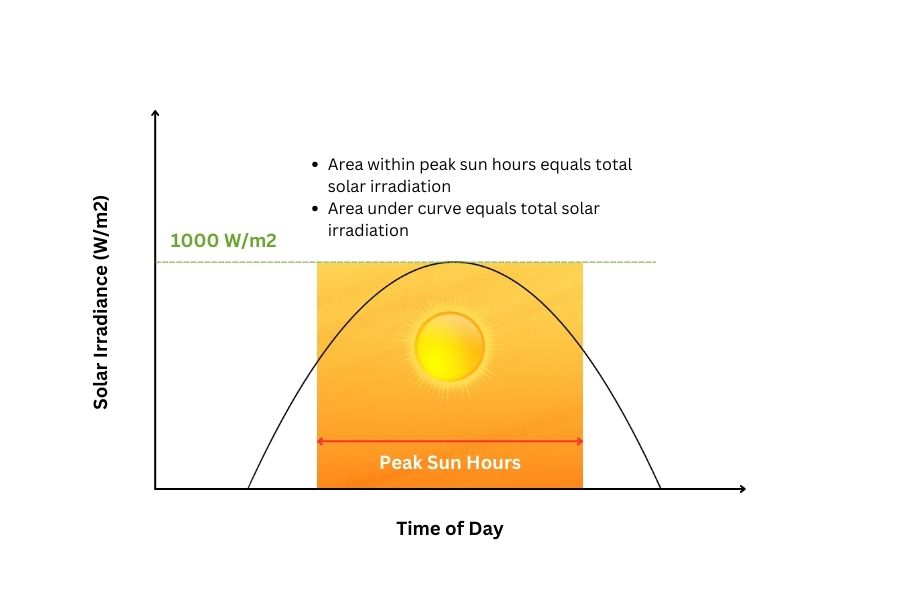
A peak sun hour in solar energy refers to an hour during the day when the intensity of sunlight is at its highest level, enabling solar panels to produce the maximum amount of electricity.
It is essential to understand that peak sun hours are not simply the total hours of sunlight in a day. Instead, they represent the specific hours when the sun’s radiation is strong enough to generate optimal energy output from solar panels.
Peak sun hours consider various factors affecting solar energy production. They include the sun’s angle, atmospheric conditions, and potential obstructions like clouds or shading.
Solar power system designers and users can accurately estimate the energy output by focusing on the hours with the highest solar radiation. They can determine the capacity and efficiency of their solar installations.
The concept of peak sun hours plays a vital role in sizing the solar system, calculating its performance, and assessing the economic feasibility of solar energy projects.
Determining peak sun hours in a particular location helps optimize the placement and orientation of solar panels. It ensures they receive maximum exposure to sunlight and generates the most electricity throughout the day.
How Are Peak Sunlight Hours Used to Measure Sunlight in Ireland?
Peak sunlight hours are a key metric used to measure the sunlight available for solar energy generation in Ireland. Various methods and data sources are employed to determine the peak sunlight hours.
One commonly used approach is to analyze historical weather data and solar irradiance measurements. Meteorological stations and solar monitoring stations collect data on solar radiation levels. It can then be analyzed to identify the hours of the day when sunlight intensity reaches its maximum.
By studying patterns over an extended period, researchers can establish average peak sunlight hours specific to different regions in Ireland.
Additionally, satellite-based data and modeling techniques assess sunlight patterns. For example, satellites with solar irradiance sensors capture information about sunlight availability and intensity across large areas. This data can be processed and analyzed to determine Ireland’s average peak sunlight hours.
Moreover, advancements in solar resource assessment tools have made it easier to estimate peak sunlight hours accurately. These tools combine inputs such as geographic location, elevation, and climate data to generate solar resource maps. They depict the expected sunlight intensity and duration throughout the day.
What Is Solar Insolation?
Solar insolation refers to the amount of solar radiation that reaches a given area, typically measured in kilowatt-hours per square meter (kWh/m²). It represents the available energy from the sun. The higher the solar insolation, the greater the potential for solar energy generation.
Furthermore, the National Renewable Energy Laboratory (NREL) researches and gathers data on average solar radiation in different regions. This data provides insights into the solar energy potential of specific areas, including Ireland.
How Will Peak Sun Hours Impact My Solar Panels?
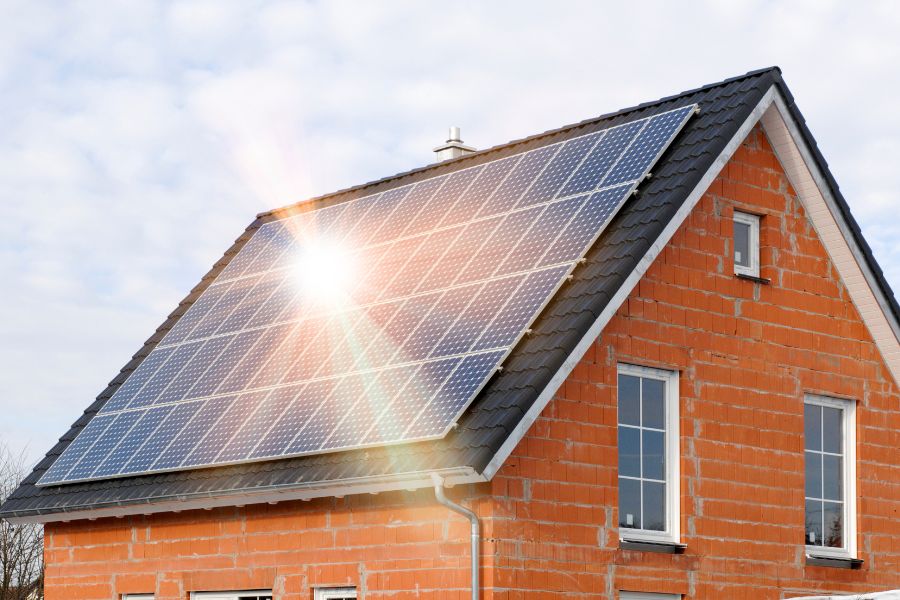
The impact of peak sun hours on solar panels is twofold. Firstly, solar panels receive higher solar irradiance during these hours, the power per unit area received from the sun.
The increased irradiance results in higher energy production because of the solar panels. Consequently, more electricity production happens during these peak hours compared to other parts of the day with lower solar intensity.
Secondly, these hours are essential because they dictate a solar panel system’s sizing and capacity requirements. Therefore, when determining the number and size of solar panels needed to meet your electricity demands, it is crucial to consider the peak sun hours specific to your location.
Areas with more peak sun hours generally require fewer solar panels, as the higher solar intensity allows each panel to generate more electricity. Conversely, regions with fewer peak sun hours might necessitate a more significant number of panels to compensate for the lower solar energy availability.
It’s worth noting that factors that affect peak sun hours vary depending on various factors. Such factors include geographic location, time of year, weather conditions, and potential obstructions that may cast shadows on the solar panels.
Therefore, it’s essential to consider these factors when assessing the potential energy production of a solar panel system. In addition, it’s recommended to position them in a location that receives maximum sunlight exposure during these hours. It helps to optimize the performance of your solar panels.
That typically involves placing the panels at an optimal tilt and azimuth angle to capture the most sunlight throughout the day.
How Many Peak Sun Hours Do Solar Panels Need?
Peak sun hours represent the duration when the sunlight is most intense and optimal for generating electricity. Generally, solar panels require a minimum of 4-5 hours per day to produce electricity efficiently.
Ways to Take Advantage of Peak Sun Hours in Your Home
Panel Placement
Position your solar panels in a location with maximum sunlight exposure during peak sun hours. It typically involves placing them on a south-facing roof. You can also mount them to minimize shading from surrounding objects like trees or buildings.
Tilt and Orientation
Optimize the tilt and orientation of your solar panels to capture the most sunlight. The ideal tilt angle for solar panels typically equals your location’s latitude, but adjustments may be necessary based on specific circumstances.
Regular Maintenance
Keep your solar panels clean and free from debris to maximize their efficiency. Regularly inspect and clean them, ensuring that there are no obstructions that may block sunlight.
What Time of Day Is Peak Sun?
Peak sun hours typically occur between 10 am and 3 pm, but this can vary depending on your location and time of year. In addition, the exact timing of the hours may shift slightly throughout the seasons. That is due to the changing angle of the sun.
How Many Peak Sun Hours Do You Need to Go Solar?
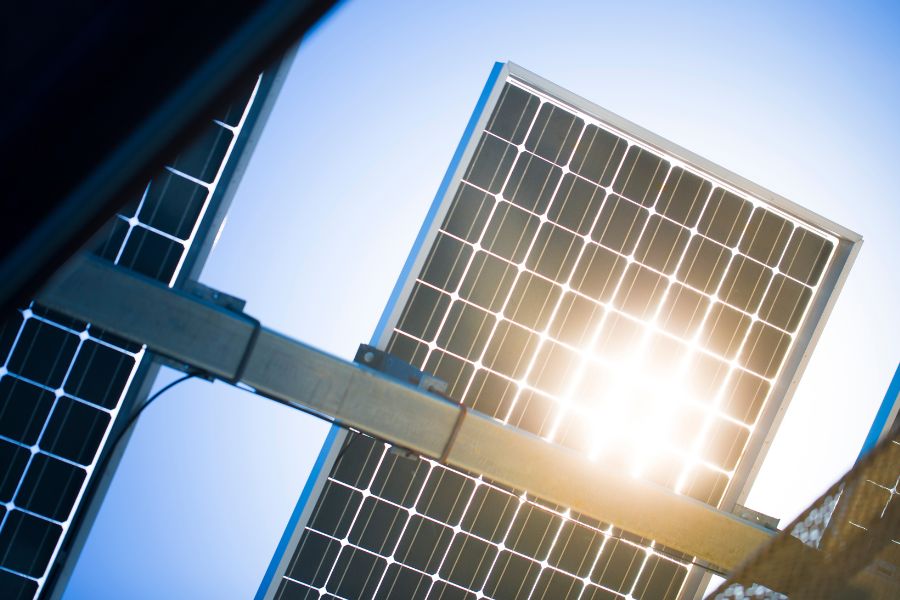
A general guideline suggests that four or more locations with peak sun hours suit solar. Therefore, having a minimum of four peak sun hours per day is typically recommended to generate enough electricity from solar panels. It makes the investment worthwhile. However, it’s important to note that each individual or household’s energy requirements and goals may vary.
How Much Sunlight Do My Solar Panels Need?
In terms of sunlight requirements, solar panels need a consistent supply of sunlight throughout the day to generate electricity. Direct sunlight is most effective, while they can still generate some power under cloudy or partially shaded conditions.
It’s important to note that even if your area doesn’t receive abundant sunlight, solar panels can still be a viable energy option. They can generate electricity even in less ideal conditions.
How Peak Sun Hours Calculation Happens for a Location
You can calculate peak sun hours based on the solar irradiance received at a specific location. Solar irradiance is the power per unit area of sunlight reaching the Earth’s surface.
Data such as solar irradiance, atmospheric conditions, and the sun’s angle calculate peak sun hours.
This information is collected over some time, typically years. It is then analyzed to determine the average number of hours per day—when the sunlight is at its peak intensity and suitable for solar energy generation.
Why Do Peak Sun Hours Vary by State and Location?
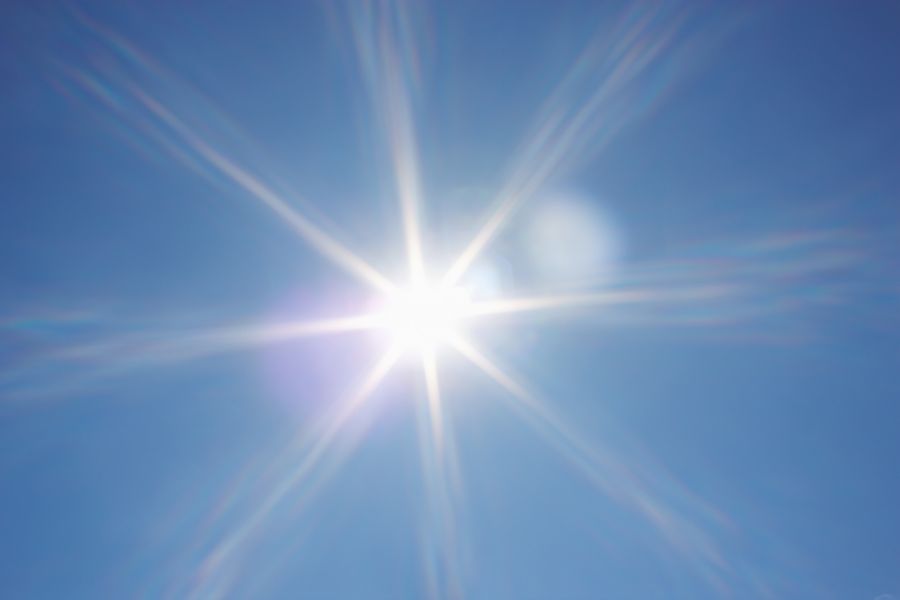
In Ireland, latitude plays a role in determining the number of sun hours. Due to its northern location, Ireland receives less direct sunlight throughout the year than areas closer to the equator.
However, other factors, such as local weather patterns, cloud cover, and terrain, also influence the amount of sunlight reaching specific locations within Ireland.
Geographical features like mountains or tall buildings can cause shading and reduce the hours in certain areas. Therefore, Ireland’s geographical characteristics and atmospheric conditions contribute to the variations in peak sun hours experienced nationwide.
Peak Sun Hours vs. Solar Irradiance
Peak sun hours and solar irradiance are related but represent different aspects of solar energy. Solar irradiance refers to the power per unit area of sunlight received at a specific location.
It quantifies the intensity of sunlight available for solar energy conversion. Peak sun hours, on the other hand, measure the duration when the sunlight is at its maximum power during the day.
While solar irradiance indicates the potential energy available, peak sun hours represent when solar panels can operate most efficiently, maximizing electricity generation.
Therefore, the hours provide a more practical measure for assessing the productivity of solar panels.
How Can I Calculate the Peak Sun Hours for My Roof?
To calculate the peak sun hours for your roof in Ireland, you can follow these steps:
- Obtain Solar Irradiance Data: Access historical solar irradiance data specific to your location in Ireland. This data represents the amount of solar energy (in kilowatts per square meter, kW/m²) received at the Earth’s surface.
- Determine the Average Daily Solar Irradiance: Calculate the irradiance received during daylight hours. One can do it by summing up the solar irradiance values for each hour of daylight and dividing by the number of daylight hours.
- Divide the Average Daily Solar Irradiance by 1000: Since one peak sun hour corresponds to 1000 W/m² (or one kW/m²) of sunlight per hour, divide the average daily solar irradiance by 1000 to obtain the number of peak sun hours.
For example, if the average daily solar irradiance is 3.5 kWh/m², dividing it by 1000 would result in 3.5 peak sun hours for your roof in Ireland.
It’s important to note that this calculation provides an estimate based on historical data and assumes clear-sky conditions. Factors like weather patterns, cloud cover, and shading from nearby objects can affect the actual peak sun hours experienced by your roof.
Consulting with solar professionals and using advanced solar calculation tools specific to Ireland can provide more accurate assessments of peak sun hours for your roof.
Conclusion
Ireland’s solar energy potential may not be as sunny as tropical destinations, but it still has plenty of solar resources to tap into.
With around 3-4 hours of peak sun per day, solar power is becoming increasingly popular for homes and businesses in Ireland.
The country fully embraces solar energy as part of its sustainable future, supported by government incentives and a thriving solar industry. By harnessing the sun’s power, Ireland can reduce fossil fuel dependence, cut emissions, and create a cleaner environment.
In the coming years, we can expect to see even more rooftops adorned with solar panels and farms expanding across the Irish landscape.
With each ray of sunlight harnessed, Ireland takes a significant step towards a sustainable and resilient energy system.
So, let’s embrace the sun, unlock Ireland’s solar energy potential, and pave the way for a brighter, cleaner future.

